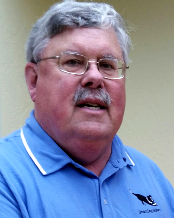
SMART DOG MININGTM
It
takes a smart dog to find hidden treasures
SCOPE and the PROJECT

Project managers are always fighting scope creep due to cost, but there are some other issues to consider. Scope creeps impact on safety and how cutting scope can actually raise costs.
Scope Creep & Safety
The impact of scope creep on budget and
schedule is often discussed, to the point that there is a tongue in
cheek saying: Scope,
Schedule Cost – you can control any two”.
And I have to agree that there is a lot of truth in that
saying, but…scope creep also has an impact on safety which will
impact a project even worse.
I always like to say Safely, Correctly, On Time
and On Budget in that order are the keys.
If you do not work a project safely it will not be completed
on time or on budget as safety holds and stand downs will ruin a
schedule and budget fast.
If you do not do the work correctly the first time, the
re-work will also kill a schedule and a budget fast.
From this perspective, scope creep will impact
safety in several ways.
First by causing a sense of hurry which can lead to losing your
safety perspective by not keeping your
eyes on the job, eyes on the task, and not avoiding line of
fire situations. And
yes injuries are serious and the impact on the personnel involved
can be tragic, but an on the job accident will also cause issues
with the overall project.
A second way is in bypassing safety and
operability reviews.
Early in the project effort is often (and should be) put in
evaluating constructability and operability issues, with the goal of
improving the schedule and the safety of the project. Scope changes
(scope creep) can bypass these evaluations, and changes can be made
that impact the constructability and operability.
This can lead to changes that impact how safely a project can
be built, and worse the ability to operate a project safely.
Most projects have a formal system for
approving scope changes with their impact on schedule and budget.
I propose that the safety impact should also be evaluated.
Cutting Scope can cost
We all “know” that scope creep will negatively
impact the cost and schedule (scope grows, cost go up, schedule
lengthens). Interesting
point, reducing the scope can also negatively impact the cost and
schedule. This usually
occurs during detail design, but it can occur anytime during a
project.
Even small changes can have an impact.
One of the first times I saw this was many years ago on a
coal preparation plant in Canada, the client decided that one of the
auxiliary process water pumps was not needed and asked us to delete
it. We were well into detail design and starting to issue drawings
to the field. The first
step was to prepare a change notice.
The change noticed indicated that deleting the pump would
cost more than cost of the pump.
Deleting the pump would require updating one
process flow diagram, three P&IDs, two general arrangements, two
mechanical installation, two structural, three electrical, and four
instrumentation drawings.
It would also require updating the equipment list, equipment
specifications, vendor data sheets, and several other documents.
As several of these drawings were already
issued for construction, a hold would be needed on some construction
work. The extra
engineering and the construction hold would cause a couple days slip
in the schedule.
When the client got the change notice a meeting
was scheduled (after some heated exchanges).
The result was to leave the pump on all the drawings,
purchase it, but not install it.
Big changes can end up almost not worth the
trouble. Another more recent experience involved a large milling
project where a portion of the flotation circuit was deleted, but
before that portion of the circuit was designed.
But the building design was already at 80% complete. The
plans had been to install the flotation circuit in two stages, but
build the entire building at the beginning.
The client decided to cut off 1/3 of the
building along the long axis.
This required redesigning the whole structure to include
foundations. Because of
the new building configuration all structural calculations had to be
redone (it was in an active seismic zone); the structural and civil
drawings all needed redoing, let alone the mechanical drawings.
The impact was a six week project slip, but
there was a cost savings.
The client had anticipated a 30% cost reduction on the
building, but the final numbers were closer to 10% savings.
These savings were only direct costs and did not include the
time value of the six week slip on project economics.
While scope creep can be bad, removing scope
can also be not good.
Oh, and the latest word is the client is considering putting the
portion of the building back on.

o
40+ years’ experience in the mining industry with strong mineral
processing experience in precious metals, copper, industrial
minerals, coal, and phosphate
o
Operational experience in precious metals, coal, and phosphate plus
in petrochemicals.
o
Extensive experience performing studies and determining feasibility
in the US and international (United States, Canada, Mexico, Ecuador,
Columbia, Venezuela, Chile, China, India, Indonesia, and Greece).
o
E-mail:
info@smartdogmining.com
